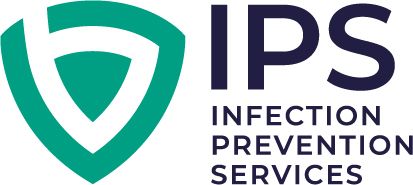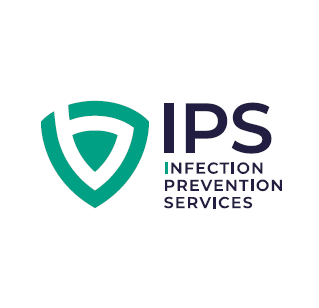Aug 15
The Dirty Truth about Sluicing: Part 2
How to Move Beyond Sluicing for Better Infection Control.
This blog, following on from Part 1, explores how we should adjust our attitude towards laundry to better safeguard staff and the environment from aerosol contamination risks and to meet evolving industry standards in Australia and New Zealand. Modern sluicing has largely fallen out of use in aged care facilities here, as advances in laundry practices have reduced the risks linked to dealing with human waste in healthcare settings.
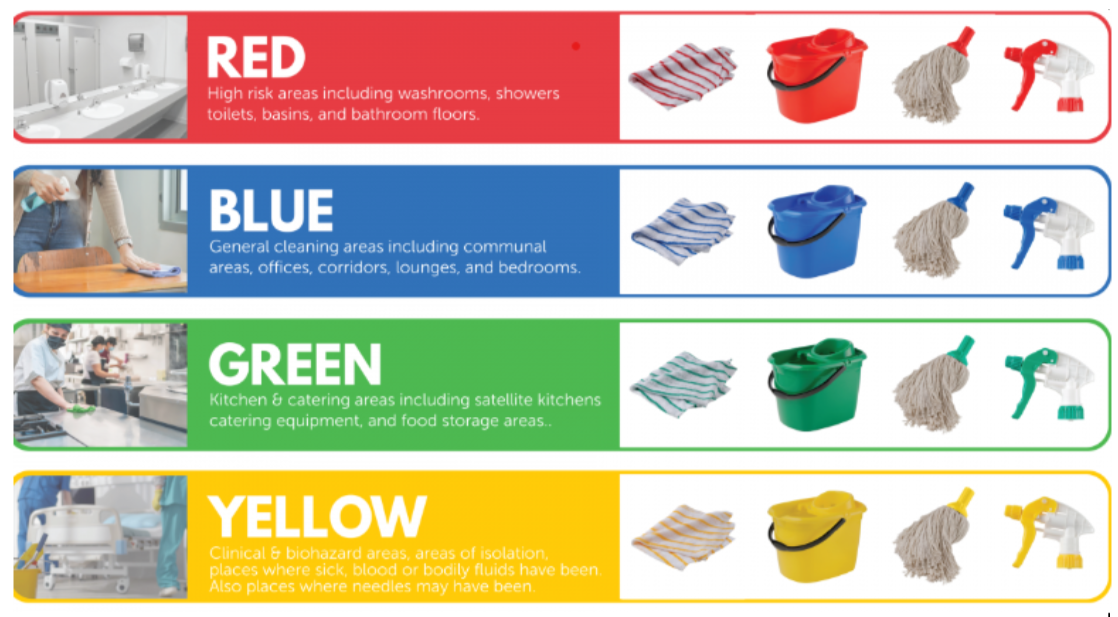
For decades, the traditional sluice room has been a fixture in aged care facilities across Australia and New Zealand, serving as a necessary, albeit unpleasant, space for handling soiled linen. However, a critical question now arises: is this outdated practice, full of unseen risks like aerosol generation and cross-contamination, still justifiable in modern aged care environments? The answer, strongly supported by significant advancements in technology, evolving industry standards such as AS 4146:2024 (Laundry practice) and NZS 8134:2021 Ngā paerewa Health and disability services standard, as well as strict legal obligations under Australia and New Zealand's Health and Safety at Work laws, is a resounding no. It's time to close the door on manual sluicing and embrace a safer, more efficient, and compliant future for laundry management that protects both staff and residents.
A Safer Approach to Laundry
For decades, the sluice room has been a standard feature in aged care facilities, serving as the space for the necessary yet unpleasant task of manually rinsing soiled linen. However, with significant technological advancements and a better understanding of infection control, it's time to ask a crucial question: is this outdated practice putting our staff and residents at unnecessary risk? The answer, supported by new standards and legal obligations, is a definite yes. It’s time to move on from the traditional sluice room and adopt a safer, more efficient approach to laundry management.
The Unseen Risks of Manual Sluicing
While seemingly a routine task, manual sluicing presents significant health and safety risks. Recent facility observation reports pointed out that the process produces aerosols, tiny airborne particles capable of carrying pathogens and contaminating nearby surfaces, equipment, and even clean laundry bags stored nearby. This splashing and aerosolisation creates a high risk of cross-contamination, turning the very room intended for cleaning into a potential source of infection.
This isn't just a matter of best practice; it's a legal obligation. Under New Zealand's Health and Safety at Work Act 2015, all employers have a primary duty of care to ensure the health and safety of their workers. This includes protecting them from exposure to bodily fluids and contaminated materials. Continuing with manual sluicing, when safer alternatives are available, directly conflicts with this fundamental duty to eliminate or minimise risks as far as is reasonably practicable.
A New Era of Standards and Technology
Fortunately, the industry has progressed. Modern standards now explicitly recommend moving away from manual sluicing. AS 4146:2024 (Laundry practice) states that fouled items should be processed directly using a washing machine's chemical or thermal disinfection cycle, making manual sluicing unnecessary. This is supported by NZS 8134:2021 Ngā paerewa Health and disability services standard, which requires that laundry be handled safely and hygienically to minimise infection risk.
This shift is made possible by two key advancements:
1. Improved incontinence products: Modern designs are far more absorbent and effective, significantly reducing the amount of soiling that reaches linen and clothing.
2. Commercial laundry machines: These are equipped with validated disinfection cycles that use thermal (heat), chemical, or a combination of both to effectively clean and sanitise even heavily soiled items without the need for pre-rinsing. The key is to ensure these machines are properly serviced and their automatic dosing systems are active to guarantee effective disinfection.
This shift is made possible by two key advancements:
1. Improved incontinence products: Modern designs are far more absorbent and effective, significantly reducing the amount of soiling that reaches linen and clothing.
2. Commercial laundry machines: These are equipped with validated disinfection cycles that use thermal (heat), chemical, or a combination of both to effectively clean and sanitise even heavily soiled items without the need for pre-rinsing. The key is to ensure these machines are properly serviced and their automatic dosing systems are active to guarantee effective disinfection.
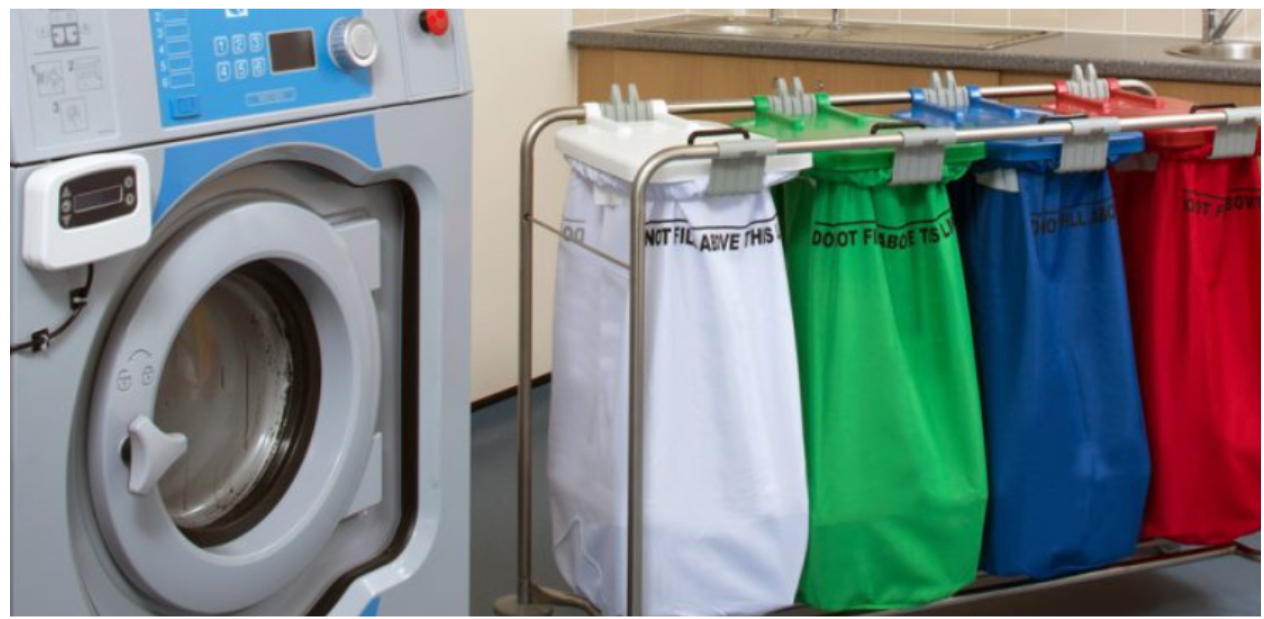
The Safer, Smarter Workflow
Eliminating sluicing doesn't complicate the laundry process—it makes it more straightforward. The recommended best practice, as outlined in the Waihi Lifecare report, is simple, safe, and efficient.
1. Sort at the Source: Instead of handling soiled linen multiple times, staff should sort it at the point of collection in the resident's room or a designated area. Use a system of clearly marked, colour-coded, and leak-resistant laundry bags to separate different categories of linen.
Heavily fouled items should be placed in their own separate and distinct bags. Bags should be filled to no more than three-quarters capacity to prevent spills and strain.
2. Direct-to-Machine: The sorted bags are then placed in covered trolleys and taken directly to the laundry. From there, the bags are simply emptied directly into the washing machine, and the bag itself is laundered along with the contents. This "no-touch" technique drastically reduces staff exposure and the risk of environmental contamination. Bags containing heavily soiled items can be washed separately on a suitable heavy wash cycle to ensure a thorough clean.
3. Repurpose the Space: With sluicing eliminated, the now-redundant sluice room can be converted into a dedicated decontamination or cleaning zone. By removing unnecessary storage and drying racks, this space can be repurposed to enhance overall facility hygiene rather than undermine it.
1. Sort at the Source: Instead of handling soiled linen multiple times, staff should sort it at the point of collection in the resident's room or a designated area. Use a system of clearly marked, colour-coded, and leak-resistant laundry bags to separate different categories of linen.
Heavily fouled items should be placed in their own separate and distinct bags. Bags should be filled to no more than three-quarters capacity to prevent spills and strain.
2. Direct-to-Machine: The sorted bags are then placed in covered trolleys and taken directly to the laundry. From there, the bags are simply emptied directly into the washing machine, and the bag itself is laundered along with the contents. This "no-touch" technique drastically reduces staff exposure and the risk of environmental contamination. Bags containing heavily soiled items can be washed separately on a suitable heavy wash cycle to ensure a thorough clean.
3. Repurpose the Space: With sluicing eliminated, the now-redundant sluice room can be converted into a dedicated decontamination or cleaning zone. By removing unnecessary storage and drying racks, this space can be repurposed to enhance overall facility hygiene rather than undermine it.
The Benefits of Moving Beyond Sluicing
Adopting this contemporary approach provides evident benefits for residents, staff, and the entire facility.
The evidence is clear: manual sluicing is an outdated practice that should be left in the past. By adopting modern technology, updated standards, and smarter workflows, aged care facilities can foster a safer and healthier environment for all, residents included. It’s a simple change that marks a significant step forward in the quality of care.
- Enhanced Safety: It significantly lowers the risk of infection transmission for both vulnerable residents and frontline staff by minimising exposure to pathogens.
- Enhanced Compliance: It ensures your facility meets the latest industry standards (AS 4146:2024 and NZS 8134:2021) and your legal obligations under the Health and Safety at work Act 2015.
- Greater Efficiency: It establishes a more streamlined, logical workflow, saving staff time and reducing manual labour.
The evidence is clear: manual sluicing is an outdated practice that should be left in the past. By adopting modern technology, updated standards, and smarter workflows, aged care facilities can foster a safer and healthier environment for all, residents included. It’s a simple change that marks a significant step forward in the quality of care.
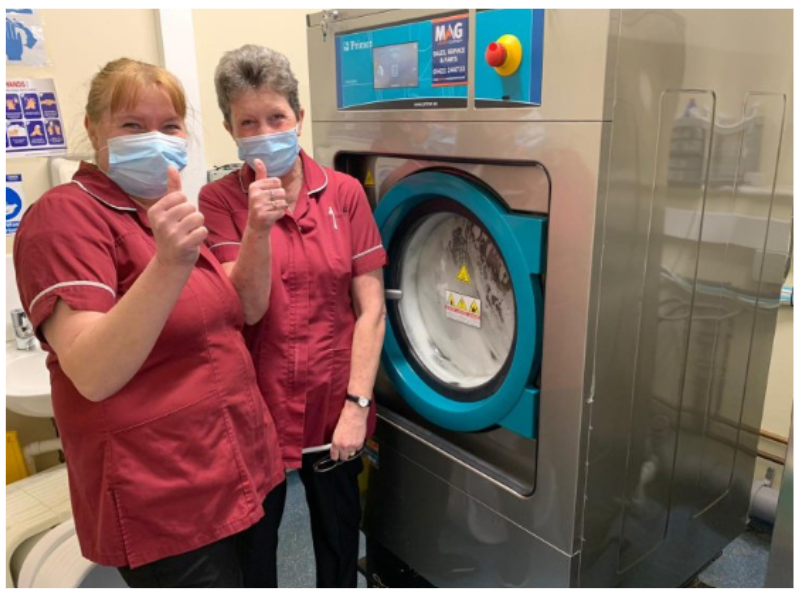
For more information about this or another topic, contact our friendly team at support@infectioncontrol.care
Infection Prevention questions can be answered on the HUB from EVE, our multilingual “bot”.
We are on Facebook and LinkedIn. Follow us, like and share.
Take advantage of our expertise in IPC. See the HUB for policies, resources and courses relating to this very important subject. Ask EVE for a quick answer to your question.
Infection Prevention questions can be answered on the HUB from EVE, our multilingual “bot”.
We are on Facebook and LinkedIn. Follow us, like and share.
Take advantage of our expertise in IPC. See the HUB for policies, resources and courses relating to this very important subject. Ask EVE for a quick answer to your question.
Lyndon Forrest
Managing Director | CEO
I am a passionate and visionary leader who has been working in the field of infection prevention and control in aged care for almost 30 years. I am one of the co-founders and the current Managing Director and CEO of Bug Control New Zealand and Australia, the premium provider of infection prevention and control services in aged care. I lead a team that is driven by a common purpose: to help aged care leaders and staff protect their residents from infections and create a healthier future for them.
I am building a business that focuses on our clients and solving their problems. We are focused on building a world-class service in aged care. We focus on being better, not bigger, which means anything we do is for our clients.
I am a passionate and visionary leader who has been working in the field of infection prevention and control in aged care for almost 30 years. I am one of the co-founders and the current Managing Director and CEO of Bug Control New Zealand and Australia, the premium provider of infection prevention and control services in aged care. I lead a team that is driven by a common purpose: to help aged care leaders and staff protect their residents from infections and create a healthier future for them.
I am building a business that focuses on our clients and solving their problems. We are focused on building a world-class service in aged care. We focus on being better, not bigger, which means anything we do is for our clients.
Erica Leadley
Manager, Marketing and Sales
Erica Leadley is a dedicated professional with a rich background in agriculture and nutrient management. Growing up on her family's farm in Mid Canterbury, she developed a deep passion for farming. She currently resides on her partner's arable property in South Canterbury.
In 2017, Erica joined the Farm Sustainability team, focusing on nutrient management and environmental stewardship. In February 2024, she became the Manager of Marketing and Sales at Bug Control New Zealand - Infection Prevention Services, where her passion now includes improving infection prevention outcomes.
Outside of work, Erica loves cooking and traveling, often combining her culinary interests with her explorations in Italy and Vietnam. She enjoys entertaining family and friends and remains actively involved in farm activities, especially during harvest season.
Erica Leadley is a dedicated professional with a rich background in agriculture and nutrient management. Growing up on her family's farm in Mid Canterbury, she developed a deep passion for farming. She currently resides on her partner's arable property in South Canterbury.
In 2017, Erica joined the Farm Sustainability team, focusing on nutrient management and environmental stewardship. In February 2024, she became the Manager of Marketing and Sales at Bug Control New Zealand - Infection Prevention Services, where her passion now includes improving infection prevention outcomes.
Outside of work, Erica loves cooking and traveling, often combining her culinary interests with her explorations in Italy and Vietnam. She enjoys entertaining family and friends and remains actively involved in farm activities, especially during harvest season.
Toni Sherriff
Clinical Nurse Specialist
Toni is a Registered Nurse with extensive experience in Infection Prevention and Control. Her career began as a kitchen hand and caregiver in Aged Care facilities, followed by earning a Bachelor of Nursing.
Toni has significant experience, having worked in Brisbane’s Infectious Diseases ward before returning home to New Zealand, where she continued her career as a Clinical Nurse Specialist in Infection Prevention and Control within Te Whatu Ora (Health NZ).
Toni brings her expertise and dedication to our team, which is instrumental in providing top-tier infection prevention solutions to our clients.
Toni is a Registered Nurse with extensive experience in Infection Prevention and Control. Her career began as a kitchen hand and caregiver in Aged Care facilities, followed by earning a Bachelor of Nursing.
Toni has significant experience, having worked in Brisbane’s Infectious Diseases ward before returning home to New Zealand, where she continued her career as a Clinical Nurse Specialist in Infection Prevention and Control within Te Whatu Ora (Health NZ).
Toni brings her expertise and dedication to our team, which is instrumental in providing top-tier infection prevention solutions to our clients.
Julie Hadfield
Accounts & Payroll
Julie is experienced in Accounts & Payroll Administration & after a long career in both the Financial & Local Government Sectors, is now working with our team. Julie brings her strong time management & organisational skills to our team, which is important to keep the company running in the background to enable the rest of our team to provide top notch service to all of our clients.
Julie is experienced in Accounts & Payroll Administration & after a long career in both the Financial & Local Government Sectors, is now working with our team. Julie brings her strong time management & organisational skills to our team, which is important to keep the company running in the background to enable the rest of our team to provide top notch service to all of our clients.
Andrea Murray
Content Editor
I attended Otago University in NZ and graduated as a Dental Surgeon. After 40 years in the profession, I retired in 2022. Infection prevention knowledge was part of everyday practice, dealing with sterilisation, hand hygiene, and cleaning.
Before retiring, I began doing some editing and proofreading for Bug Control as I am interested in the subject and in the English language. During the COVID-19 lockdown, I attended the ACIPC course "Introduction to Infection Prevention and Control", which increased my interest in the subject. I now work part-time as the Content Editor for the company.
I attended Otago University in NZ and graduated as a Dental Surgeon. After 40 years in the profession, I retired in 2022. Infection prevention knowledge was part of everyday practice, dealing with sterilisation, hand hygiene, and cleaning.
Before retiring, I began doing some editing and proofreading for Bug Control as I am interested in the subject and in the English language. During the COVID-19 lockdown, I attended the ACIPC course "Introduction to Infection Prevention and Control", which increased my interest in the subject. I now work part-time as the Content Editor for the company.
Personally, I lived in the UK for 10 years. My two children were born in Scotland, and now both are living in Europe, one in Amsterdam, Netherlands, and the other in Edinburgh, Scotland. I live close to Fairlie on the South Island of NZ, a beautiful part of the country, and I love being out of the city.
Princess
Customer Support
Princess began her career as a dedicated Customer Service Representative, honing her communication and problem-solving skills. She later transitioned into a Literary Specialist role, where she developed a keen eye for detail. Her journey then led her to a Sales Specialist position, where she excelled in client relations.
Now, as a Customer Support professional in Infection Prevention Services. Princess focuses on ensuring customer satisfaction, building loyalty, and enhancing the overall customer journey.
Princess began her career as a dedicated Customer Service Representative, honing her communication and problem-solving skills. She later transitioned into a Literary Specialist role, where she developed a keen eye for detail. Her journey then led her to a Sales Specialist position, where she excelled in client relations.
Now, as a Customer Support professional in Infection Prevention Services. Princess focuses on ensuring customer satisfaction, building loyalty, and enhancing the overall customer journey.
Dianne Newey
Senior Infection Prevention and Control Consultant
With over 35 years of experience as a Registered Nurse, I'm now applying all my experience and skills as a Senior Infection Prevention and Control Consultant with Bug Control Infection Prevention Advisory Services.
This is through IP&C education, IP&C environmental audits and reports, IP&C policy and procedure review and development and consultancy on infection prevention and control issues. When I’m not working, I spend time with my family and in my garden, where I grow all my own veggies.
With over 35 years of experience as a Registered Nurse, I'm now applying all my experience and skills as a Senior Infection Prevention and Control Consultant with Bug Control Infection Prevention Advisory Services.
In my role, I promote Infection Prevention and Control, to RACF's and disability support services.
This is through IP&C education, IP&C environmental audits and reports, IP&C policy and procedure review and development and consultancy on infection prevention and control issues. When I’m not working, I spend time with my family and in my garden, where I grow all my own veggies.
Caoimhe (Keva) Stewart
Manager of Customer Service
Caoimhe is the Manager of Customer Service at Bug Control | Infection Prevention Services, where she ensures that learners have a seamless and supportive experience. With her previous experience as a Registered Nurse in both the UK and Australia, Caoimhe brings a deep understanding of healthcare to her role. Before joining Bug Control IPS Services, she worked in a variety of nursing settings, including Occupational Health, Palliative Care, and Community Nursing, providing her with the ability to empathise with learners and understand the challenges they face.
Caoimhe is the Manager of Customer Service at Bug Control | Infection Prevention Services, where she ensures that learners have a seamless and supportive experience. With her previous experience as a Registered Nurse in both the UK and Australia, Caoimhe brings a deep understanding of healthcare to her role. Before joining Bug Control IPS Services, she worked in a variety of nursing settings, including Occupational Health, Palliative Care, and Community Nursing, providing her with the ability to empathise with learners and understand the challenges they face.
Her move from nursing to customer service was driven by her passion for helping others, not just in clinical settings but also in ensuring that people have access to the resources and support they need. Now, Caoimhe applies her problem-solving skills, attention to detail, and communication expertise to her role, helping to create a positive and effective learning environment for all students.
Outside of work, Caoimhe enjoys travelling, staying active, and catching up with friends on the weekends. Whether in healthcare or customer service, she’s dedicated to making a meaningful difference and supporting people in their personal and professional growth.
